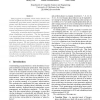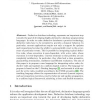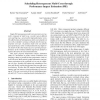452 search results - page 37 / 91 » Symbolic Execution of Behavioral Requirements |
HPCA
2005
IEEE
15 years 11 months ago
2005
IEEE
Most programs are repetitive, where similar behavior can be seen at different execution times. Proposed on-line systems automatically group these similar intervals of execution in...
98
Voted
DAGSTUHL
1998
15 years 9 days ago
1998
Deductive database technology represents an important step towards the goal of developing highly-declarative database programming languages. In order to make deductive databases a ...
112
Voted
SP
2010
IEEE
15 years 2 months ago
2010
IEEE
—To handle the growing flood of malware, security vendors and analysts rely on tools that automatically identify and analyze malicious code. Current systems for automated malwar...
185
click to vote
POPL
2004
ACM
15 years 11 months ago
2004
ACM
We present a polynomial time randomized algorithm for global value numbering. Our algorithm is complete when conditionals are treated as non-deterministic and all operators are tr...
101
Voted
ISCA
2012
IEEE
13 years 1 months ago
2012
IEEE
Single-ISA heterogeneous multi-core processors are typically composed of small (e.g., in-order) power-efficient cores and big (e.g., out-of-order) high-performance cores. The eff...



